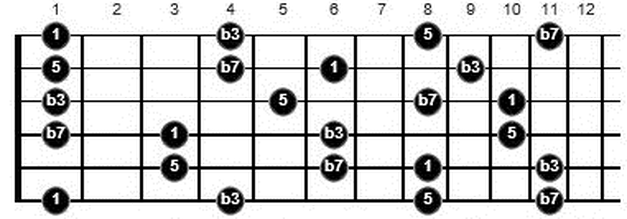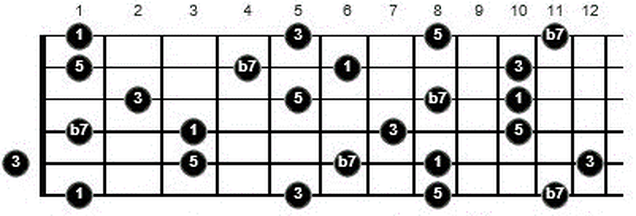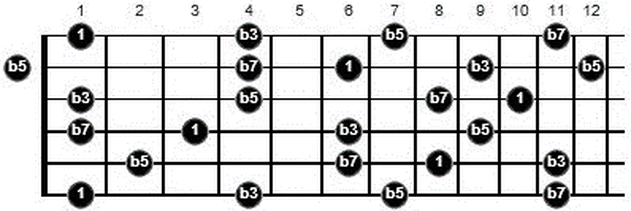I was never a big fan of learning arpeggios, especially via a set of shapes up and down the neck, and a lot of rote repetition. Even after I had managed to learn the clunky shapes, I never really felt comfortable using them and they always seemed forced. I knew I needed to learn arpeggios, but I had to come up with some musical way of learning them and incorporating them into my playing. Arpeggios dramatically increase your chances of ‘hitting the right notes’ if you practice them, so a few years later I came back to them, but with a completely different approach.
In the diagram below you have all the notes up to the 12th fret for an Fmaj7 arpeggio.

You can probably see the aforementioned tedious shapes in there, but what I want you to focus on instead is coming up with is stuff you would actually play using the notes from an arpeggio. If you think about it, we’re just one note away from a pentatonic scale, so treat this collection of notes more like scale fragments than arpeggio patterns.
Practicing arpeggios in rigid patterns also forces you to do the most uninspiring thing you can do with an arpeggio—play the notes in order like an ‘etude’. Outside of ‘etude’ playing, you’ll want to make music with arpeggios, especially since we’re dealing with the chord tones.
So, practice coming up with lines that sound good to you, and you’ll soon see this reflected in your playing; subtly at first, but it will come through. If you practice arpeggios this way, what you’re actually doing is practicing the fragments of the scale with the strongest notes, and this will make your overall playing sound much better.
Here are 3 more arpeggio diagrams so that you’ve got the most common ones covered.
F minor 7 Arpeggio

F7 Arpeggio

Fm7b5 Arpeggio

This arpeggios hack is featured in our latest eBook, ‘50 Guitar Hacks for the Advancing Guitarist‘, which you can check out here.



